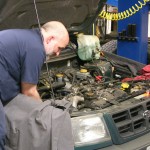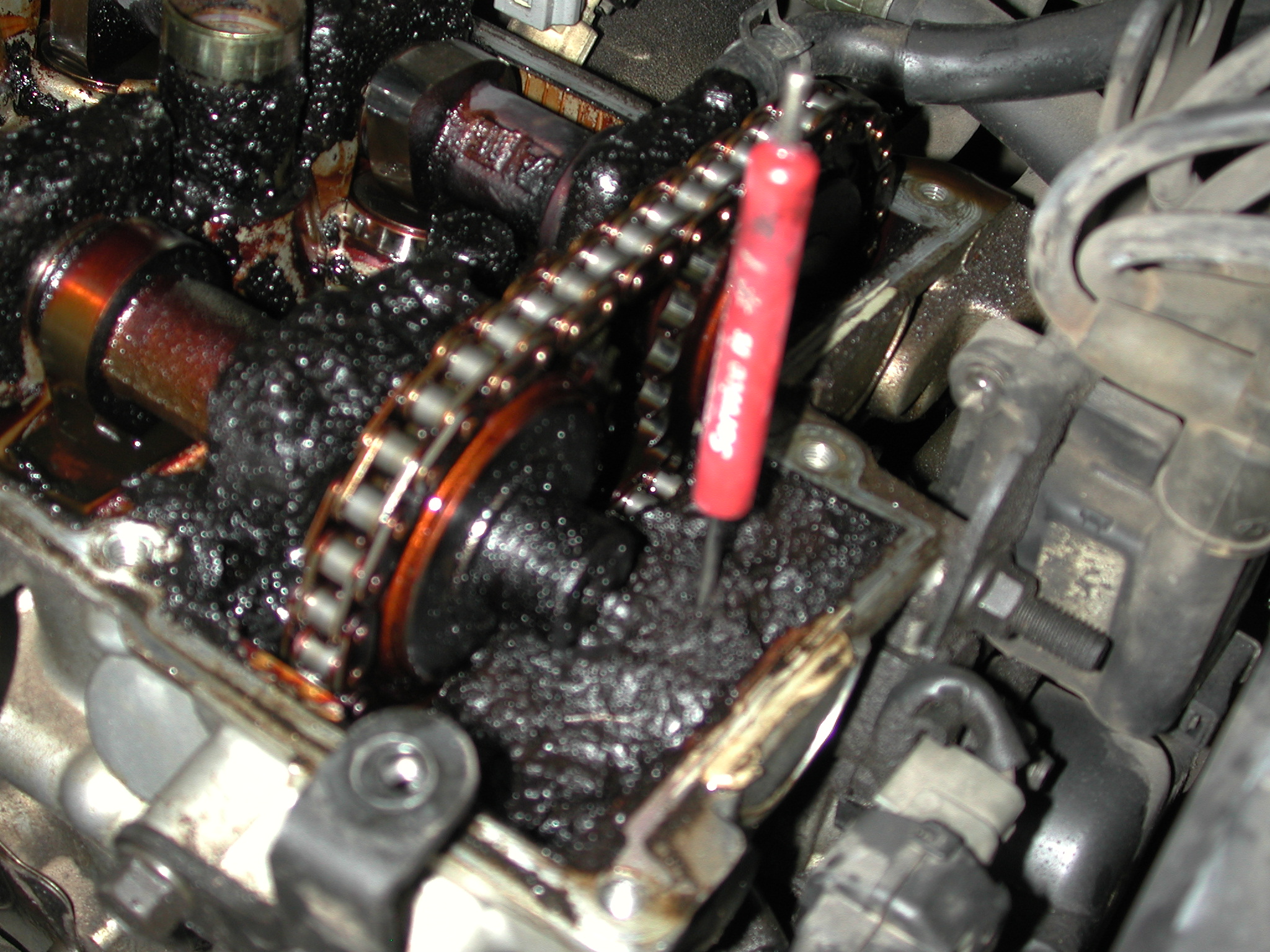 The Green Living Journal “offers solutions to the serious energy, health, and environmental problems facing all of us.” (If you don’t already read it, you’re cheating yourself. The Journal is FREE, and available at 550 locations around Portland.) Each quarterly issue covers topics including gardening, renewable energy, food, education, recycling, and much more. These are the kind of people we root
The Green Living Journal “offers solutions to the serious energy, health, and environmental problems facing all of us.” (If you don’t already read it, you’re cheating yourself. The Journal is FREE, and available at 550 locations around Portland.) Each quarterly issue covers topics including gardening, renewable energy, food, education, recycling, and much more. These are the kind of people we root for, so when they asked us to write an article on the importance of maintenance for you and the environment, you know we jumped on it. Here’s a sneak peak at the article coming out in their next issue…
for, so when they asked us to write an article on the importance of maintenance for you and the environment, you know we jumped on it. Here’s a sneak peak at the article coming out in their next issue…
Regular automotive maintenance is good for you, your wallet, and the environment
Why should you spend time and money maintaining your vehicle?
The average new car cost $30,500 in 2012. That’s a pretty steep investment, so it makes sense to squeeze every dime out of it. We asked Tom Dwyer, owner of Tom Dwyer Automotive Services in Portland, Oregon, for the best way to keep our vehicles on the road for years to come…
“Maintenance.” said Tom. “The absolutely best way to ensure safe and reliable performance is to follow a sensible, proactive maintenance plan. With consistent maintenance, your vehicle can last for many years and hundreds of thousands of miles beyond its warranty period.”
Beyond protecting your investment, Tom gave us other reasons to preventatively maintain your ride…
- Better for your safety– The most important reason is the safety of you, your family, and those around you. Every time you drive you trust your vehicle to function safely and reliably, and scheduled maintenance ensures it will.
- Better for the environment– Driving means polluting, but you can reduce the amount you pollute. Properly running vehicles reduce pollutants to a minimum, and postpone the day the whole thing is consigned to the junk heap.
Stretching your vehicle’s life makes even more sense when you consider the often-overlooked embodied energy of the vehicle; the energy required for manufacture and delivery. Somewhere between 12% and 28% of the carbon produced in your vehicle’s lifetime happens here, before you ever drive it. You’ve already “spent” this carbon, so avoiding a new vehicle means stretching the time until you have to spend it again.
- Better for your pocketbook– Maintenance is cheaper than fix-on-fail repair and it’s certainly cheaper than a new vehicle. Putting money into your car a bit at a time reduces the chance big expenses will hit all at once.
- Better for your peace of mind– Your vehicle should be an asset, not a headache. Mechanical breakdowns ruin vacations, and vehicles with recurring problems can be infuriating. Keep the basics maintained for the best possible driving experience.

For the best maintenance outcomes, find a qualified, capable shop you trust, with service advisors and technicians not paid by commission; have them inspect and evaluate your vehicle’s actual needs, and then follow their advice.
What is automotive maintenance?
Tom started off with basic definitions… “’Repair’ is a fix for a malfunctioning vehicle, but ‘maintenance’ is planned replacement to avoid malfunction. Maintenance prevents repair”.
Tom told us he hears owners relay things like “It’s always been such a good car I’ve never had to do anything to it. Why Am I having all these problems now?” But, he says, “Proper maintenance includes more than just oil changes”. Your vehicle may perform just fine until it fails without warning, exposing a whole chain of failing components.
How much maintenance do I need?
It’s almost as easy to over-maintain as to under-maintain your vehicle. New technology may make much of Dad’s maintenance advice obsolete, and “Quick Lube” shops survive by selling maintenance items in their interests, not yours. Your owner’s manual is a good place to start, but its guidelines are just that… guidelines. Depending on your driving habits, vehicle usage, climate, type of vehicle, how long you intend to keep the vehicle and other factors you may need to maintain things more or less often than recommended. Sticking too rigidly to the manual menus may not deliver the value you need.

Vehicles maintenance means more than oil changes, but they’re a good place to start. The screwdriver above is buried in the sludge of an engine 20,000 miles overdue for its oil change.
Beware of menu-driven services
“Many shops, particularly dealerships, use menu-driven maintenance”, said Tom. “They use vehicle guidelines rather than inspections or records to determine what ‘should’ be done at specific mileage intervals. They’ll do everything on the menu’s list, needed or not, then call about other services that you really needed”.
“Menus may work for the first 30,000 miles but after that they fail to predict actual needs accurately.”
“The use of manufacturer interval recommendations, scheduled inspections and the use of detailed records is the best way to make sure your vehicle is getting exactly the attention it needs.”
Finding a shop you trust
“The absolutely best way to keep your vehicle maintained is to find a qualified, certified automotive repair shop you trust and then follow their recommendations”, said Tom.
Both sides of that statement- qualified AND trustworthy- are important. Some shops operate without proper training or equipment and may be commission-driven, so their advice may be inaccurate or tainted by a desire to build a paycheck. On the other hand, your uncle’s advice may be well-intentioned but not based on qualified technical knowledge.
Tom had some pointers to find shops that meet both those criteria:
- Ask for referrals from friends or locals. The senior counter person at an auto parts store might be a source if you’re in a new town and don’t know anyone else.
- Use internet reviews like Angie’s List or Yelp. Make sure to check BBB (Better Business Bureau) reports, available online.
- Make sure the shop is organized, equipped, and well-staffed. Look for the shop’s certifications, as well as certifications for individual staff members.
- Make sure there is a great warranty. Look for a minimum of 12-month, 12-thousand miles, and 24/24 is better.
- Begin with a small service to test the waters. A small job may be a good guide to how the shop will handle larger repairs.
- Don’t miss your opportunity to support green businesses! Even among qualified, trustworthy shops, some are more ecologically responsible than others. Look for any environmental certifications (like Portland’s PPO Certification) or ask about the shop’s environmental policies.

It’s great that more auto shops are recycling, but the truly green shops go farther. Tom Dwyer Automotive created a one-of-a-kind program that gives service discounts to clients who offset their CO2 production. Their Carbon Neutral Program has already prevented over 1.5 million pounds of carbon from entering our environment!
It’s important to stay up-to-date
Another reason to keep up on your maintenance is your budget. Maintenance is cheaper than repair, but that doesn’t make it cheap; staying current spreads those bills out over time, avoiding any one big hit to your pocketbook. Keeping up may be hard, but playing catch-up may be impossible.
The payoff
“Find a qualified automotive shop you trust, and work with them to set a maintenance plan that meets your personal ownership goals. Then, most importantly, stick to the plan! You’ll save time and money, and get the most enjoyment from your driving experience.” And that’s not a bad payoff for any investment!
Additional Resources
How to make your car last 250,000 miles, MSN Auto
Top 10 car maintenance mistakes, MSN Auto
Is it more efficient to drive your car into the ground or ditch it for a better one?, The Guardian
Buy a New Car or Keep the Old: Which is Better for the Environment?, About.com










